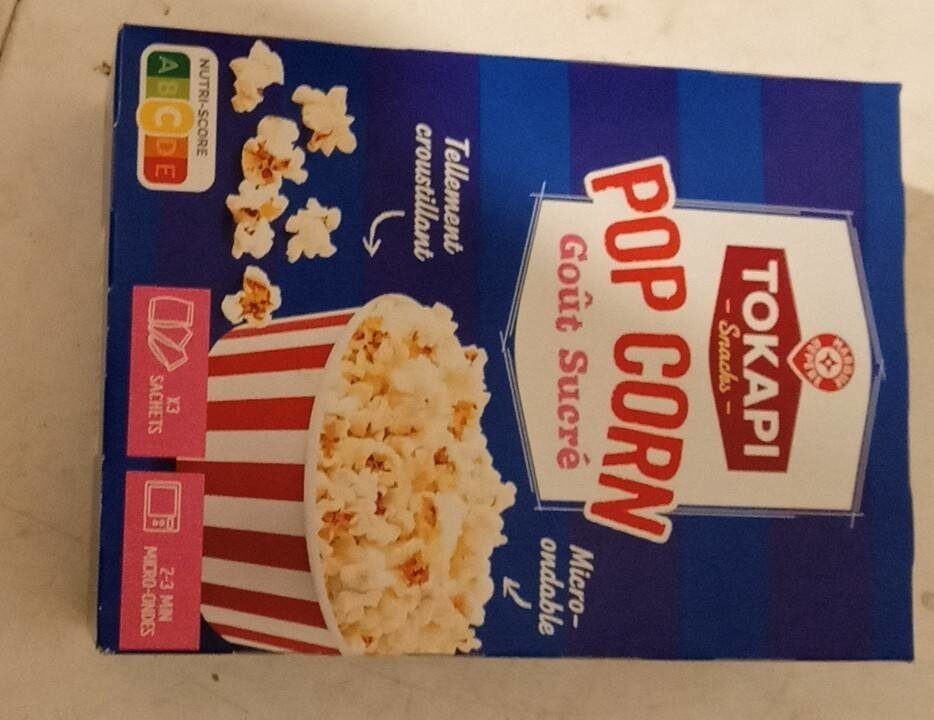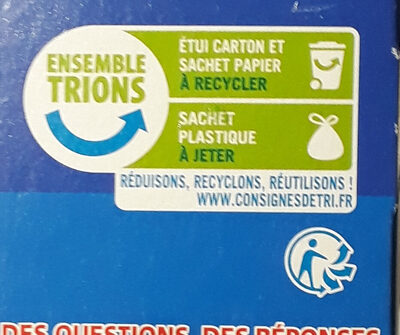Pop corn - Tokapi - 270 g
This product page is not complete. You can help to complete it by editing it and adding more data from the photos we have, or by taking more photos using the app for Android or iPhone/iPad. Thank you!
×
Some of the data for this product has been provided directly by the manufacturer Scamark.
Barcode: 3564700556894 (EAN / EAN-13)
Common name: Pop corn
Quantity: 270 g
Packaging: Plastic, Bag, fr:Etui en carton, fr:Sachet en plastique
Brands: Tokapi, Marque Repère
Categories: Snacks, Salty snacks, Sweet snacks, Appetizers, Popcorn, Sugared popcorn
Labels, certifications, awards: Nutriscore, Nutriscore Grade C
Stores: Leclerc
Countries where sold: France
Matching with your preferences
Other information
Preparation: A préparer exclusivement au four à micro-ondes : 1- Sortez le sachet de son étui transparent. Dépliez et posez le sachet au centre du plateau du four à micro-ondes en respectant l'indication « CETTE FACE DESSOUS ». 2- Choisissez la puissance maximum du four. Le temps d'éclatement varie de 2 à 4 minutes d'un four à micro-ondes à l'autre ; afin de déterminer le temps nécessaire à votre four à micro-ondes, réglez la minuterie sur 4 minutes. Ecoutez bien, arrêtez le four à micro-ondes lorsque le bruit d'éclatement ralentit à 2 ou 3 secondes d'intervalle. 3-Enlevez prudemment du four à micro-ondes le sachet qui est très chaud. Secouez-le et laissez-le refroidir quelques secondes. 4-Ouvrez le sachet en tirant sur les coins diagonalement opposés en faisant attention à la vapeur chaude qui s'en échappe. Ne réchauffez pas les grains non éclatés et ne réutilisez pas le sachet. Attendez quelques minutes que le micro-ondes refroidisse avant de faire éclater un nouveau sachet. ATTENTION : Le four à micro-ondes et son plateau doivent être en parfait état. Ne laissez pas l'appareil sans surveillance. Ne laissez pas les enfants préparer un sachet sans la présence d'un adulte. N'utilisez qu'un sachet intact. Posez directement le sachet sur le plateau d'origine du four à micro-ondes. Ne placez pas le sachet sous une cloche pour four à micro-ondes. Ne posez qu'un seul sachet sur le plateau. L'interruption du processus d'éclatement entraîne une diminution de la qualité du pop corn. Un dépassement du temps de cuisson optimal entraine la carbonisation du popcorn.
Report a problem
Data sources
Product added on by openfoodfacts-contributors
Last edit of product page on by bertusdendroef.
Product page also edited by acuario, assatadiet, kiliweb, org-app-elcoco, org-scamark, packbot, pimidat, remilk, roboto-app, roselyne, scamark, segundo, tacite-mass-editor, teolemon, yuka.UVBnYkxLY2hyUElua2MxbDhUN2YydkJjd0krYkFtR3RjZmc2SUE9PQ, yuka.VEpJSE1ab3V0S2dKb2ZSa3hnSGI1UEIrd3NDM1IxRzZHdnNJSWc9PQ, yuka.sY2b0xO6T85zoF3NwEKvlkBVSoOOmxudMkf4wkqq2vWEIpLDZohN5IrkDKs, yuka.sY2b0xO6T85zoF3NwEKvllV-DtraiSL8MhLjnWuI5e6Pdb7lQcNOy6bfGao, yuka.sY2b0xO6T85zoF3NwEKvllVBb8j5kjv7BibUqRKUw_jWM5G0TPF9uZjrKqs.













